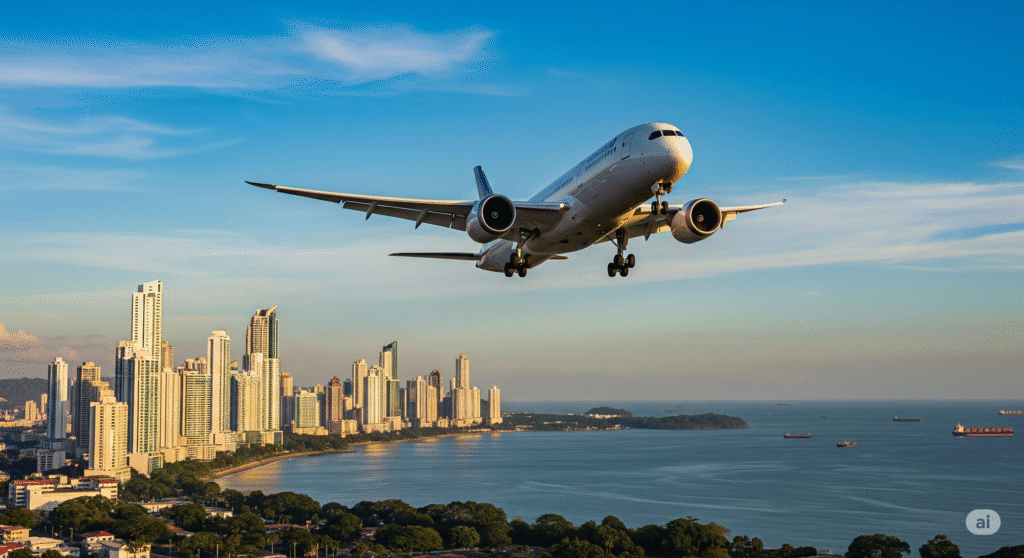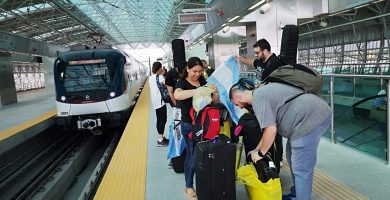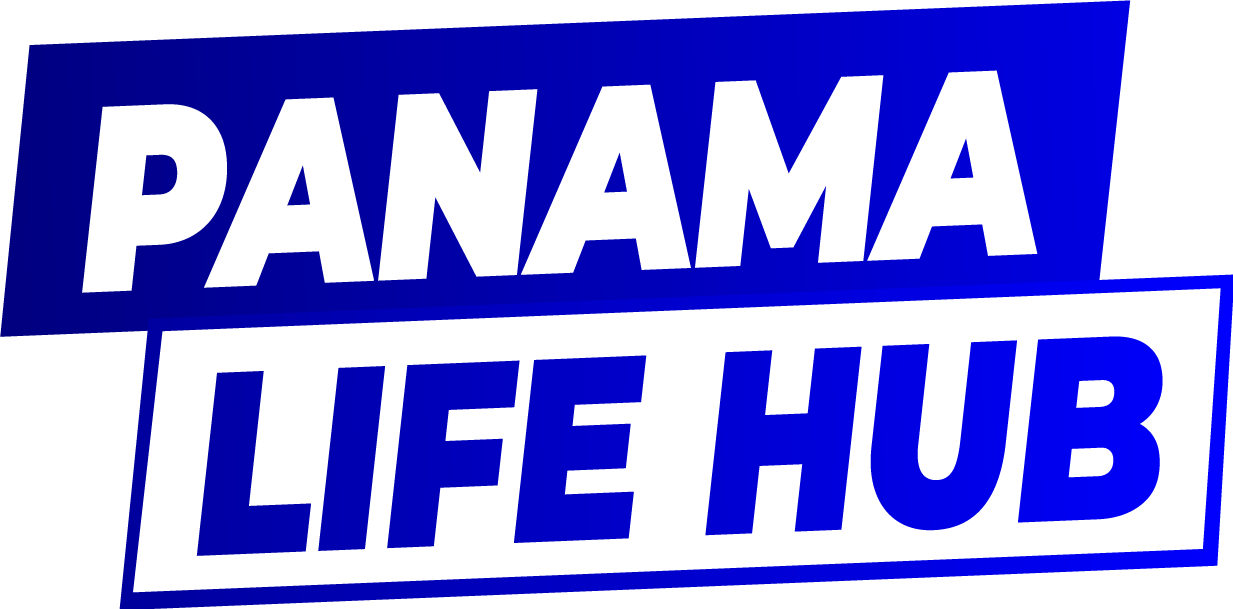
Moving to Panama in 2025 could be one of the smartest lifestyle choices you’ll make. Whether your goal is to retire in a tropical setting, launch a business, or start fresh somewhere new, Panama offers a unique mix of affordability, modern infrastructure, and cultural vibrancy. But here’s the thing: the real cost of moving to Panama is not always what the glossy expat websites make it seem.
Most online guides give you estimates for rent, utilities, and maybe healthcare. Still, they often miss the finer points—like why the same carton of eggs can cost $5 more depending on where you shop, or how a local diner (fonda) can serve you a full meal for under $8 while a trendy café charges three times as much.
In this guide, you’ll get both: the factual, category-by-category cost breakdown that SEO-savvy expat blogs use to rank on Google, plus my perspective as a Panamanian resident who knows the local tricks for stretching your budget without feeling deprived.
Let’s start by separating relocation expenses from ongoing living costs, then we’ll dive into each category in detail—housing, groceries, dining, transport, healthcare, utilities, lifestyle, and practical money-saving tips.
Understanding the Real Costs of Relocating to Panama
When people search for “cost of moving to Panama 2025,” they’re often looking for a magic number—a single figure that sums up the entire experience. But there isn’t one. You need to think in two stages:
- Initial relocation costs—the one-time expenses to get yourself and your belongings here.
- Monthly living costs—what you’ll spend once you’re settled.
Initial relocation costs can include:
- Flights: From North America, expect $350–$1000 round-trip, depending on season. If you’re flexible and watch for promotions, you might find deals under $300.
- Shipping belongings: If you plan to bring furniture, appliances, and personal items, a 20-foot container from the U.S. can cost $4,000–$8,000, including port fees. Downsizing before you move can save thousands here.
- Housing deposits: Most landlords request one month’s rent plus a deposit equal to another month. Some may ask for a third month if the property is furnished or in a high-demand area.
- Furnishing your home: Arriving with just your suitcases? Outfitting an apartment ranges from $1,000 for essentials bought second-hand, up to $5,000 for higher-end items purchased new. Of course you can buy brand new, cheap furniture, but it is usually made of materials that will not last a year.
These costs are before you even start your new life. Once you arrive, your monthly living costs will depend heavily on your lifestyle choices.
A common mistake I see from newcomers is underestimating variable expenses. Housing may be predictable, but groceries, eating out, and transportation can swing wildly depending on where and how you shop, dine, and commute. This is where local insight matters most.
Housing Costs in Panama: From Luxury Apartments to Local Rentals
Panama’s housing market is incredibly diverse. You can rent a luxury high-rise apartment with ocean views and amenities like a gym and pool, or you can find a modest home in a friendly neighborhood for a fraction of the price.
In Panama City:
- Exclusive areas (Punta Paitilla, Costa del Este, Punta Pacífica): $1,500–$3,500/month for 1–2 bedroom units, often with high-end finishes and 24-hour security.
- Middle-class neighborhoods (El Cangrejo, San Francisco, Obarrio): $800–$3,000/month for well-maintained apartments.
- Working-class or mixed areas: $500–$1,500/month for smaller, older units.
In the interior:
- David: $400–$700/month for comfortable houses.
- Boquete: $600–$3,000/month, depending on proximity to town center, gated community, and mountain views.
- Coastal towns: Prices vary—popular expat beach areas like Coronado can be as high as city rents, while lesser-known spots are far cheaper.
Here’s where my local perspective comes in: your rent influences much more than just your housing bill. The neighborhood you choose determines your everyday prices at supermarkets, restaurants, and even services. Upscale neighborhoods often have higher grocery prices—even for the same brands. I’ve seen identical items cost up to $5 more in an exclusive supermarket than in a budget-friendly store in a different part of town. Multiply that across 20–30 items each week, and the difference adds up fast.
Another tip: budget supermarkets are getting smarter. Many now offer online ordering with home delivery, letting you bypass traffic and the dreaded quincena rush—the payday period every two weeks when stores are jam-packed with shoppers.
Choosing the right neighborhood can save you hundreds each month without sacrificing safety or comfort.

Retire in Panama: Embrace the Sun, Savings, and Serenity

Accommodation in Panama City: Stay Smart, Save More, Enjoy Fully
Grocery Shopping in Panama: Where You Buy Matters
Grocery shopping is one of the most underestimated factors in the cost of living in Panama. It’s not just about what you buy, but where you buy it.
Upscale supermarkets (often in expat-heavy or wealthy neighborhoods) are modern, well-stocked, and air-conditioned—but you’ll pay for the convenience and environment. Imported goods are easy to find here, but they come with hefty price tags.
Budget chains and municipal markets, on the other hand, offer significantly lower prices for everyday items, especially if you stick to local brands and produce.
From my experience as a resident:
- A carton of eggs: $4.50 in an upscale store vs. $2.99 at a neighborhood market.
- Fresh vegetables: 20–30% cheaper at public markets than in supermarkets.
- Cleaning supplies: Often 15–25% cheaper at discount stores.
Money-saving grocery strategies:
- Buy produce at public markets—fresher and cheaper than supermarkets.
- Shop at budget supermarkets for pantry staples, even if it means traveling a bit.
- Use online grocery platforms from budget chains to save time and avoid crowded aisles.
Expatriates often default to the nearest store for convenience, but this choice alone can inflate your monthly food bill by 20–30%. Knowing where locals shop is key to keeping your costs down.
Eating Out in Panama: From Fine Dining to Fondas
Panama offers a diverse culinary scene: Asian, Mediterranean, American, and traditional Panamanian dishes are all easy to find. But eating out regularly can quickly become one of your biggest expenses if you’re not careful.
Cost ranges:
- Fine dining: $30–$70 for a standard main dish; premium steak cuts start at $50+.
- Mid-range restaurants: $12–$25 for a main course.
- Fondas (local diners): Complete meals (meat, rice, salad, drink) for under $10.
- Street food stalls: Filling meals for as low as $5.
Here’s the reality from my side as a local: while fondas and street food are affordable, eating out every day will still hurt your budget. The most cost-effective way to enjoy Panama’s food scene is to cook most of your meals at home and reserve dining out for weekends or special occasions. That way, you can enjoy everything from ceviche to sushi without feeling guilty about the bill.
And remember, restaurant prices in tourist-heavy areas (Casco Viejo, parts of Boquete, beach resorts) are often inflated compared to local neighborhoods.
Transportation Costs: Public, Private, and Everything in Between
Transportation in Panama is affordable and varied.
- Metro: $0.35 per ride; clean, efficient, and expanding. Ideal for daily commuting in the city.
- Buses: $0.25 for standard routes; reliable but slower.
- Taxis & ride-hailing apps: Starting at $2.50, with prices increasing in peak hours or high-demand zones.
- Car ownership: Gasoline averages $4/gallon in 2025. Add insurance ($200–$600/year), maintenance, and parking fees ($50–$150/month in the city).
If you live along the metro lines in Panama City, public transportation can save you hundreds each month compared to car ownership. However, in less connected areas or if you plan frequent travel to rural zones, having a car becomes much more practical.

Metro Bus Card: Save Money and Travel Smarter in Panama City

Taxis in Panama City: Navigating Your Ride Like a Local

Tocumen International Airport: Smooth Travel, No Surprises
Healthcare in Panama: Affordable Quality?
Panama offers both public and private healthcare systems, and both are accessible to residents and many expats.
Public system: Very affordable—consultations can be just a few dollars—but longer wait times and less modern facilities are common.
Private system:
- General consultations: $30–$50.
- Specialists: $60+.
- Health insurance: $80–$200/month depending on age and coverage.
Many expats find that even paying out of pocket for private care here is cheaper than insurance premiums in their home countries. Hospitals in Panama City, like Punta Pacífica and Hospital Nacional, meet international standards.
Utilities and Internet Costs in 2025
Utilities are another moderate expense in Panama, but again, lifestyle plays a big role.
- Electricity: $60–$120/month, but can reach $200+ if you run air conditioning all day.
- Water: $10–$25/month.
- Internet: Fiber optic plans start at $40/month; mobile data packages from $15/month.
Lifestyle Choices That Can Make or Break Your Budget
Panama can be as expensive or as affordable as you make it. If you want luxury condos, imported groceries, and daily restaurant outings, you’ll easily match or exceed North American costs. But if you mix local habits with smart spending, you can live comfortably for much less.
The winning formula:
- Choose a neighborhood that balances convenience with cost.
- Shop where locals shop.
- Limit imported goods—many have excellent local alternatives.
- Take advantage of affordable leisure—beaches, hiking, and community events are often free or low-cost.
Practical Tips for Saving Money When Living in Panama
- Shop smart: Use budget supermarkets and public markets.
- Cook at home: Reserve restaurants for special occasions.
- Use public transport: Metro and buses are reliable and cheap.
- Buy local brands: Often, the same quality for less.
- Leverage online services: Save time and avoid impulse buys.
Final Thoughts: Is Moving to Panama Worth It in 2025?
Yes—if you know the real costs and adapt to local realities. Panama offers political stability, warm weather, affordable healthcare, and diverse living options. By combining accurate planning with insider knowledge, you can enjoy a high quality of life without overspending.
In 2025, the smartest movers will be those who look beyond the “expat bubble” prices and learn from locals. That’s the difference between simply moving to Panama and truly thriving here.
